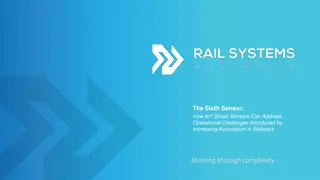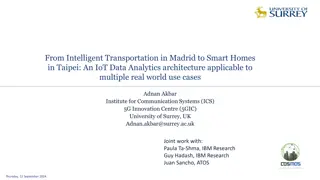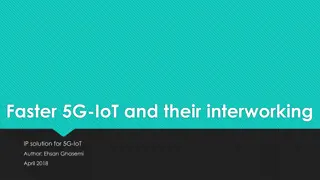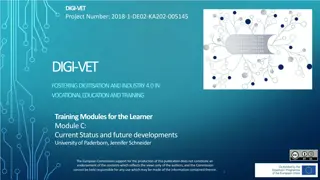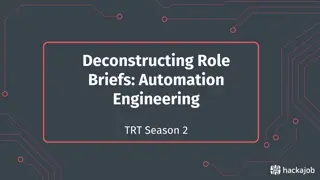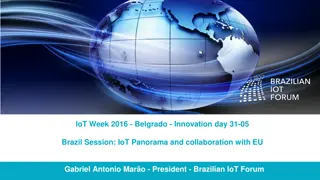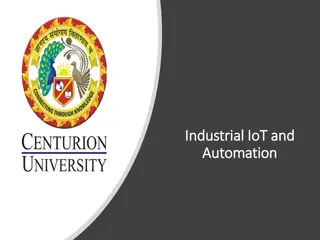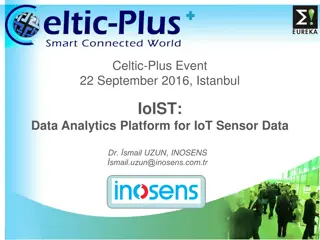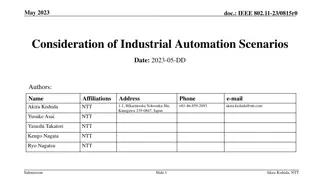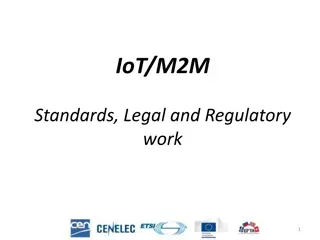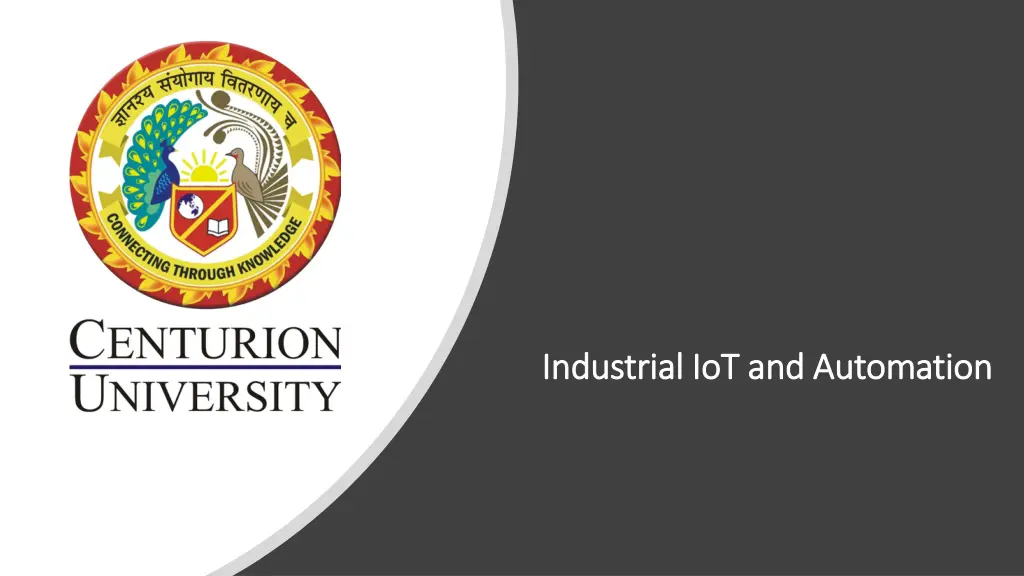
Enabling Technologies for Industrial Networks and Automation Protocols
"Explore the latest developments in industrial networks and automation protocols, including technologies like EtherCAT and protocols such as DNP3 and Modbus. Learn about the key enabling technologies driving Industrial IoT and automation. Discover how these technologies are shaping the future of industrial connectivity."
Uploaded on | 0 Views
Download Presentation

Please find below an Image/Link to download the presentation.
The content on the website is provided AS IS for your information and personal use only. It may not be sold, licensed, or shared on other websites without obtaining consent from the author. If you encounter any issues during the download, it is possible that the publisher has removed the file from their server.
You are allowed to download the files provided on this website for personal or commercial use, subject to the condition that they are used lawfully. All files are the property of their respective owners.
The content on the website is provided AS IS for your information and personal use only. It may not be sold, licensed, or shared on other websites without obtaining consent from the author.
E N D
Presentation Transcript
Industrial IoT and Industrial IoT and Automation Automation
Enabling Technologies for Industrial Networks Enabling Technologies for Industrial Networks Thoroughly describes most (if not all) of the enabling technologies for Industrial and IIoT Networks: DNP3 (Distributed Network Protocol-3), V2V (Vehicle-to-Vehicle), V2X (Vehicle-to-everything), V2I (Vehicle-to-Infrastructure), I2V (Infrastructure-to-Vehicle), V2P (Vehicle-to-Pedestrian), P2V (Pedestrian-to-Vehicle), V2N (Vehicle-to-Network), N2V (Network-to-Vehicle), I2N (Infrastructure-to-Network), N2I (Network-to-Infrastructure), ZigBee, and BACnet (Building Automation and Control Networks), . Namely as follows: Ethernet, Transmission Control Protocol (TCP), Internet Protocol (IP), PROFINET, Component Based Automation (CBA), Modbus, EtherCAT, CANopen (Control Area Network open), NMT (Nordic Mobile Technology), Process data object (PDO), Ethernet Powerlink, DLMS/COSEM (Device Language Message Specification/COmpanion Specification for Energy Metering), 2
Enabling Technologies for Industrial Networks Enabling Technologies for Industrial Networks Recent Developments in Industrial Networks Industrial Automation Protocols EtherCAT is Ethernet for Control Automation Technology. Based on Ethernet and was developed specifically with industrial automation in mind. EtherCAT use standard frames as well as the physical layer as characterized in IEEE 802.3 Ethernet Standard However it addresses some specific concerns for industrial automation such as: Rapid response times, Minimal data requirements for each device, Costs for implementation. 3
Enabling Technologies for Industrial Networks Enabling Technologies for Industrial Networks Recent Developments in Industrial Networks Industrial Automation Protocols EtherCAT uses the same Physical and Data link Layers as Ethernet but the protocols deviate from there. EtherCAT networks do not require external switches in the network. Each EtherCAT device typically has two Ethernet ports The EtherCAT slave will automatically return the frame, to the master, with an open port detected downstream, essentially, self-terminating. EtherCAT networks can extend well beyond Star Topology with a Tree, Line, etc. 4
Enabling Technologies for Industrial Networks Enabling Technologies for Industrial Networks Recent Developments in Industrial Networks 5
Enabling Technologies for Industrial Networks Enabling Technologies for Industrial Networks Recent Developments in Industrial Networks Even though Real-Time Ethernet technologies are widely used for industrial automation systems, application development is still challenging, due to their low-level complexity as well as their high expertise needed for their configuration. Therefore, a higher layer of abstraction is required, which is typically found in application-layer protocols. An increasingly popular application-layer Fieldbus protocol is CANopen, as it provides a vast variety of communication mechanisms, such as time or event-driven, synchronous or asynchronous as well as additional support for time synchronization and network management. Furthermore, it offers a high-degree of configuration flexibility, requires limited resources and has therefore been deployed on many existing embedded devices. 6
Enabling Technologies for Industrial Networks Enabling Technologies for Industrial Networks Recent Developments in Industrial Networks 7 Figure 1: Communication in a CANopen system.






